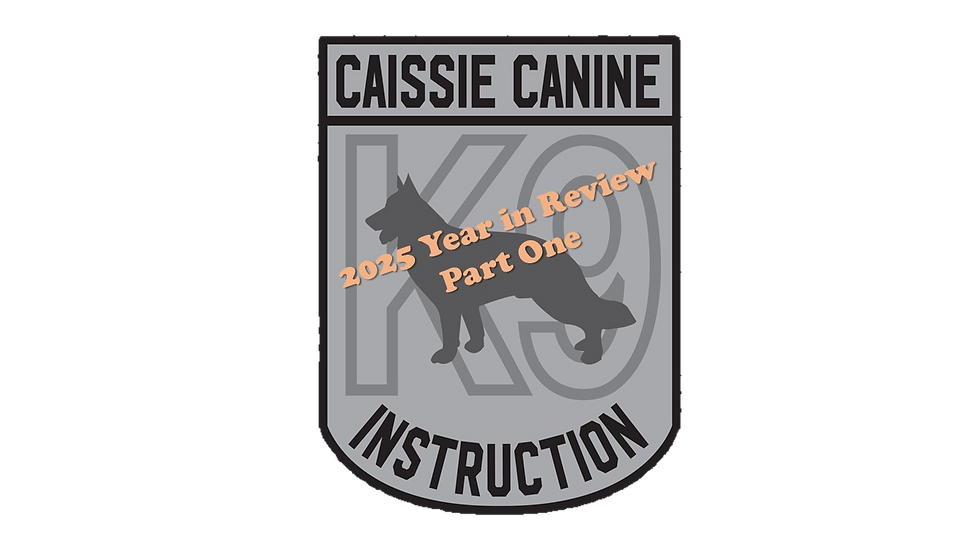CAISSIE CANINE INSTRUCTION: WHY DOES MY DOG BARK?
- caissiecanineinstr

- Apr 19, 2021
- 3 min read

We would like to take this time to thank everyone on our social media platforms for taking the time to recommend new blog content and topics that can be addressed to help you with your canine companion. Over the next two months, we will answer your questions and concerns from our own professional opinion and lived experience.
This week’s RUFF TAILS features’ our canine friend, MISA! …. and THE MUCK

On our hiking trails there are bogs of black muck. Misa loves to splash through these because, well it’s fun.

One particular time, I was throwing the ball, and well... like most great dogs, she fetched LOL
As canine instructors and professionals, we often receive the question, “why does my dog bark so much? how can I get them to stop? and why does the bark seem at times to be more aggressive than others?”
So, let’s tackle these questions...
First, dogs are highly expressive and barking is a vocal communication that dogs use. Therefore, a bark can mean a variety of different things.
1. Territorial: If a person or animal comes into the dog’s “space” it will trigger excessive barking. The barking often gets louder, if the perceived threat gets closer. The pitch of this type of bark is usually a lower sound. A dominant dog will make a deep and long sounding growl, which means he/she is serious and means business.

2. Fear: Some dogs, if startled, or hear any type of noise will bark. This can happen anywhere, not just in the home. Often, this bark is usually high pitched. If the dog is scared, you may notice that the dog will continuously bark while backing up. Keep in mind, if a dog is demonstrating signs of fear this could easily make their behaviour unpredictable.

3. Boredom: Dogs left alone in the backyard or the house will bark because they are unhappy, and bored. Some dogs will exhibit other symptoms such as pacing, destructiveness, or depression. Dogs are pack animals and enjoy being with the family unit.

4. Attention seeking: Dogs will bark if they want something, whether it is a treat, to go outside, playing, or even greeting people. It is their way of “speaking”.

Getting your dog to bark less takes work, time, and patience. Remember to always speak calmly, yet firmly to your dog. When you yell at a barking dog it often will stimulate the dog more, as your dog may perceive your loud response as an indication of you joining in on the “barking”.
Train your dog to understand the word “quiet”. When your dog is barking, say “quiet” in a firm, but calm voice. When your dog stops barking, (even just to take a breath) praise him/her and give them a treat.
NEVER reward your dog with a treat if they are barking
If you have to leave your dog outside or inside for an extended amount of time, try to tire them out before you leave.
You can take them to the park, a long walk, or play ball before leaving.

A tired dog is a quiet dog.
If you trust you dog, food dispensing toys can be left out during the day. These toys can keep them busy for several hours.
We recommend when first introducing these dispensing toys, to first try them on a weekend under your supervision, to ensure they won’t tear it apart or swallow any small pieces.
We recommend that you purchase a brand name product such as the Kong products or Nina Ottosson puzzles, as they seem to be pretty durable for most breeds.




Comments